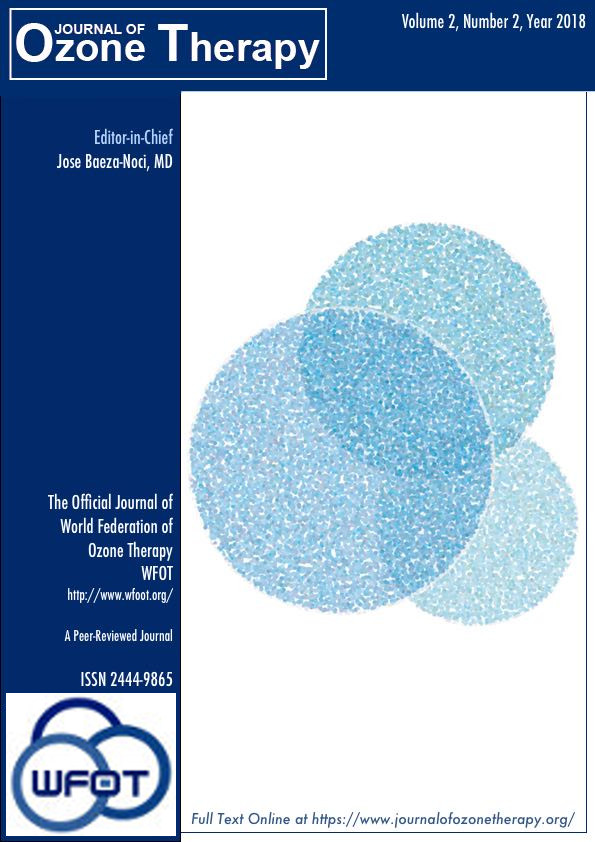Ozone Therapy in Gynecology [abstract]
DOI:
https://doi.org/10.7203/jo3t.2.2.2018.11158Parole chiave:
ozone therapy, PID, infertility, contraception, tubal factor, PCOS Abstract
Abstract
Explanation.
Gynecology is a vast branch including study of many disorders related to female genital tract, menstrual cycle, female hormones, infertility etc. Ozone Therapy is helpful in many of these.
PID - Pelvic Inflammatory Disease is a very common gynecological disorder caused by bacterial, fungal or other infections of genital tract and the pelvic area surrounding that. Ozone being an excellent antibacterial, antimicrobial and antifungal agent is very useful in treatment of PID. Ozone also gives very good results in cases of chronic PID which are resistant to many antibiotics, in such conditions, ozone gives better relief and also for longer time.
INFERTILITY. When a female is unable to conceive after 1 year of married life without using any contraception, she is considered for investigations and treatment of infertility. Many causes of infertility can be divided into:
- 1. Male factor
- 2. Female Factor
Female factor infertility – Infertility arising out many female factors, Ovarian and Tubal factors respond well to ozone therapy.
Tubal block due to inflammation may be treated with ozone therapy. Ozone given Vaginally can reduce the inflammation at the cornue or in tubes and open the block.
Ovarian factors are complex to treat. Problems like Anovulation, Ovarian cyst, Polycystic Ovaries can be treated with ozone therapy. Encouraging results have been found with Ozone therapy in PCOS with infertility. In my presentations, I am going to present a few cases of above conditions.
 Downloads
Downloads
Downloads
Pubblicato
Come citare
-
Abstract2013
-
PDF 683
Fascicolo
Sezione
Licenza
Journal of Ozone Therapy applies the Creative Commons Attribution-NonCommercial 4.0 International License (CC BY NC 4.0) license to works we publish.
Under this license, authors retain ownership of the copyright for their content, but allow anyone to download, reuse, reprint, modify, distribute and/or copy the content as long as the original authors and source are cited. No permission is required from the authors or the publishers.
You may not use the material for commercial purposes.
Appropriate attribution can be provided by simply citing the original article, provide a link to the license, and indicate if changes were made.
You may do so in any reasonable manner, but not in any way that suggests the licensor endorses you or your use.




